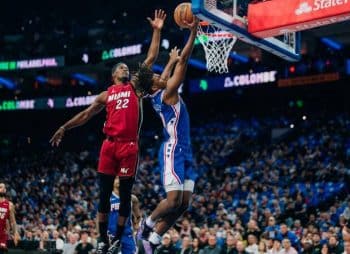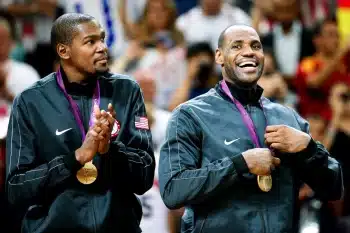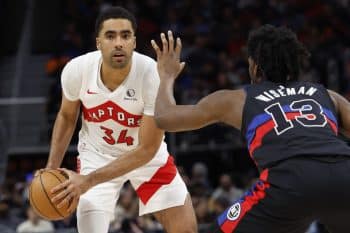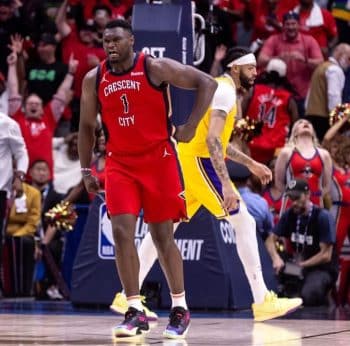NBA
NBA PM: A Sneak Peek At The Charlotte Hornets
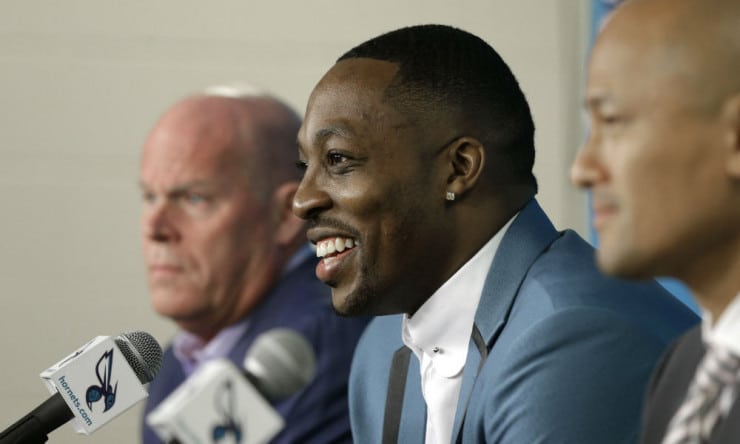
The Charlotte Hornets made a huge gamble this offseason by trading for Dwight Howard, a polarizing player who has departed every NBA franchise he’s played for under a cloud of controversy. The Hornets easily won the trade with the Atlanta Hawks, as removing the three years and $37.5 million guaranteed left for the unproductive Miles Plumlee was a win in and of itself.
However, recent comments by Howard indicate that he believes reuniting with coach Steve Clifford in Charlotte will give him an opportunity to recapture past glory. Hornets beat writer Rick Bonnell of the Charlotte Observer apparently feels it’s a foregone conclusion that Howard will replace incumbent Cody Zeller as the team’s starting center. But is that the best idea?
The Hornets were 33-29 when Zeller played but just 3-17 without him. Had Charlotte maintained the same .53 win percentage with Zeller absent, the team would have won seven or eight more games, possibly reaching the fifth seed in the East. Zeller also joined Kemba Walker as the two greatest difference makers on the Hornets’ roster. Zeller’s +5.4 net rating led the team, just ahead of Walker’s +3.6. The team was 10.6 points per 100 possessions better with Walker on court compared to off, and +9 in net rating differential for Zeller. Their nearest teammate in net differential was Michael Kidd-Gilchrist (+3.3).
As we gear up for the 2017-18 NBA season, we dig into the Hornets’ roster, one of the teams expected to make a move in the weakened Eastern Conference. Players are listed in descending order of salary for this season.
Dwight Howard, $23.4 million
“I haven’t had a system where I can be who I am since I was in Orlando,” Howard told Adrian Wojnarowski for an ESPN piece published Friday. “I’ve been in this system before, and I know how dominant I can be.”
Howard was referring to the similarities between Clifford’s system in Charlotte and the system Stan Van Gundy ran in Orlando when Clifford was an assistant. The biggest take away from Howard’s comments, however, is that he’s not looking to age gracefully in a more supportive role. He’s still looking to turn back the clock and sees the Hornets as a vehicle for that end.
On the plus side for Charlotte, both Kemba Walker and Nicolas Batum are better at executing the pick and roll than Dennis Schroder, the starting point guard for last season’s Hawks. Howard scores a supremely-efficient 1.2 points per possession as the roll man in pick and rolls but used fewer than 100 such possessions last season. It’s unclear if this resulted from a lack of proficiency in executing the pick and roll by Schroder or resistance from Howard to making the play a staple of his offense.
If Howard still believes that most of his offense should come from post isolation, it will be a bad sign for Charlotte. Howard scores about 50 percent fewer points per possession in post isolation than he does as a roll man. Year after year, Howard remains among the NBA’s least efficient post scorers.
Nicolas Batum, $23.4 million
Batum is a natural small forward, but so are Marvin Williams and Michael Kidd-Gilchrist, both of whom join Batum among Charlotte’s four highest-paid players. Williams has morphed into a stretch power forward since joining the Hornets while Batum starts at shooting guard, Charlotte’s position of least depth. Aside from Batum, the only other experienced shooting guard on the roster is Jeremy Lamb, whose issues we’ll discuss below. The Hornets paid a hefty price to steal Batum from the Trail Blazers. His ability to stretch the floor and set up Howard will be huge keys to determine if the new lineup can be a success.
Marvin Williams, $13.1 million
Williams has been a reliable shooter and defender for Charlotte, but his -0.5 net rating last season was worse than every Hornet to play at least 800 minutes except Lamb (-1.1) and the departed Ramon Sessions (-4.8). It will be critical for Williams to remain consistent as a three-point shooter if Howard does indeed replace Zeller as the starting center. Zeller is a more dynamic offensive player while Howard typically remains glued to the paint. The more Williams can continue to stretch the floor, the more it will insulate Charlotte from the spacing issues that significant minutes from Howard will generate.
Michael Kidd-Gilchrist, $13 million
Perhaps the most concerning aspect of adding Howard to the Hornets’ starting lineup is the prospect of pairing him for significant minutes with Kidd-Gilchrist, another non-shooter. Even if Walker, Batum and Williams remain steady contributors from the three-point line, there will be major spacing issues any time Howard and Kidd-Gilchrist share the floor. MKG is among the better defensive small forwards in the league, but his presence will make it impossible for Charlotte to deploy the type of four-out lineups Howard became accustomed to in Orlando. Look for Kidd-Gilchrist to play increased minutes with the second unit alongside Zeller. You may also see Williams play increased minutes at small forward with Frank Kaminsky standing in as the fourth shooter in lineups with Howard.
Cody Zeller, $12.5
Zeller, after battling injuries, became one of the breakout players from the last NBA season. No Hornet will have to sacrifice more if Howard is to receive the increased offensive role he’s seeking. The biggest question is, if inserting Howard as a starter doesn’t lead to wins, will the chemistry fracture if he’s asked to swap places and allow Zeller to resume his role as a starter?
Kemba Walker, $12 million
That Walker, an All-Star, has only the sixth-highest salary for Charlotte shows what a massive bargain he is, especially with two guaranteed years left on the deal. Walker is the Hornets’ engine and it will be on him to make new lineups work. Charlotte should have improved depth at point guard so, ideally, Walker won’t be counted on to shoulder quite as heavy a minutes load as last season.
Jeremy Lamb, $7 million
Among the nine Hornets to play at least 800 minutes last season, Lamb had the second-worst net rating. The former first round pick for the Houston Rockets has had a disappointing career to date but will be among the keys for Charlotte to improve this season. He’s the only natural shooting guard on the roster with the size to guard larger wings, if you accept that Batum is a natural small forward. Lamb posted a career-best 17 PER last year, well above the league average of 15, and it has trended up every season. However, Lamb shot a career-low 28 percent from three. The Hornets will hope for a bounce-back shooting season from Lamb, which, combined with his excellent rebounding for his position, would translate to a huge boost for Charlotte.
Malik Monk, $2.9 million
According to Cole Zwicker of NetScouts, Malik Monk was the most efficient college freshman on shots off the dribble since 2006, posting a spectacular 1.01 points per possession. However, Monk remains a mystery since we haven’t seen what he’ll be able to do against NBA defenses. Can he handle well enough to spend minutes as a backup point guard? Can he defend well enough to spend significant minutes at shooting guard despite his under-developed, 6-foot-3 frame? These are questions that remain to be answered, and we were denied a sneak peek since he was sidelined during NBA Summer League due to injury. Monk could end up the steal of the draft or he could struggle to find a position in the NBA. His range of outcomes is very wide, and the Hornets will need that outcome to be positive to bolster the team’s efforts to join the contenders in the East.
https://twitter.com/colezwicker/status/863647324580401152
Frank Kaminsky, $2.8 million
Kaminsky was one of only five Hornets to post a positive net rating last season among players with at least 800 minutes. As mentioned, his outside shooting will take on a greater importance this season with Howard’s arrival impacting the team’s spacing. Kaminsky has shot 33 percent for his career from three, which is below league average but still good for a big man. If he can improve on that percentage while also improving his rebounding (4.5 per game last season) and maintaining something close to the 11.7 points per game he scored last season, he will remain an integral part of Charlotte’s rotation and a bargain as he is still on his rookie deal.
Michael Carter-Williams, $2.7 million
MCW was a good get for Charlotte on a one-year deal at $2.7 million, but his lack of shooting makes this move a question mark, given the new team dynamics. In an ideal scenario for the Hornets, Carter-Williams could spend minutes in the backcourt with Monk where his size allows him to guard larger wings. The ball will be safer in Carter-Williams’ hands on offense than Monk’s, and the presence of Zeller with the second unit could lead to vastly-improved depth. That’s if everything works out the way it’s supposed to. If any of Charlotte’s pieces stray off script, it could prevent the team from reaching its full potential.
Aside from Carter-Williams, Shams Charania of The Vertical is reporting that the Hornets are expected to sign point guard Julyan Stone if he’s able to receive clearance from FIBA. Stone is 6-foot-7 and could also bolster the team’s wing depth. And the team has also signed second round pick Dwayne Bacon — who has received comparisons to Joe Johnson — to a minimum deal. Bacon looked excellent in Summer League, leading the Hornets with 15.7 points per game, including 29 in the finale against Orlando
The Hornets have a brutal November schedule, with a stretch starting Nov. 10 that includes games in Boston, Chicago, Cleveland and Toronto, interspersed with home games against the Clippers, Timberwolves, Wizards and Spurs. That means Charlotte will have to figure things out right away. There won’t be a light early schedule to ease Howard into the rotation, so we should know before the year is out if adding him was the right move.
